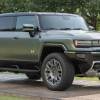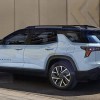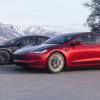
Which EV Charges the Slowest in Cold Weather?
Cold temperatures affect all types of vehicles ranging from gasoline-powered ones to electric cars. However, we don’t often consider that the cold also affects charging times on an EV. Which electric vehicle charges the fastest, and which one is the slowest?
What did researchers find in Norway’s test of electric vehicles?

The Norwegian Automobile Federation (NAF) evaluated the claims automakers made for each brand’s electric vehicles regarding range and charging. NAF’s organization drove 20 different EV models, combining city and highway driving with at least one mountain pass to drain the electric car’s battery.
To make the tests fair, the NAF drove approximately 300 miles (482 km total) and drove at a range of 37 mph to 68 mph (60 to 110 km/h). Once the vehicle’s batteries were discharged, each EV was then placed on a charger to go from 10% to 80% charge.
The researchers found that most EVs were about 18.5% off in their standard range figures for colder weather. The only model that came close was the Hyundai Kona, which performed only 9.91%less than expected. It’s also noted that charging times were extended in colder temps.
Which electric car is the slowest at charging in cold weather?
When it came to charging, the Nissan Leaf took 75 minutes to go from 10% to 80% and went about 186 miles on the battery, which is pretty poor since Nissan claims it can go 226 miles.
The best EV for charging is the Audi E-Tron 55 Quattro. That model only took 27 minutes, but it was charged with a 150 kW charger.
Other disappointing models include the Renault ZOE, which took 65 minutes. Still, it was the Opel Ampera-e (Chevy Bolt in America) that had the worst time of 95 minutes, according to InsideEVs.
Other electric vehicles that performed well in winter conditions were the Mercedes-Benz EQC, which took around 40 minutes, and Audi’s E-Tron 50 Quattro charged in 30 minutes.
What else can you take away from Norway’s testing of 20 EVs?
If range anxiety keeps you from purchasing an EV in the future, don’t let this test cause more worry. The fact that electric vehicles are changing yearly, increasing range times, while more charging stations are being built across the country should put your mind at ease. Technology has come a long way and will go even further in a short amount of time.
However, one crucial thing came from the tests NAF performed. The organization figured out that while the EV stops when the battery is depleted, you can still get a few more miles out of it. Simply turn the car off and let it sit for 30-60 minutes, then turn it back on and drive as far as you can. Do this a few times, and you can make it to a charging station or home that might be nearby.
Also, the car will show signs that the battery is getting close to being depleted before it actually happens, so you can quickly change your route if needed to get to a charger. You’ll notice things like the vehicle losing warmth and acceleration not being as lively as it was when you initially set out on your journey.
While electric vehicles perform pretty well in the wintertime, expect shorter range distances when the cold temps start coming around. You can also help extend the range by a few miles if you stop less and avoid accelerating too hard.


